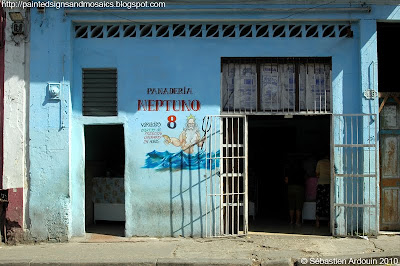
Earlier this month I mentioned that while walking along the streets of Lisbon I came across a few adverts painted on glass. The first couple can be seen outside a convenience store and promote two of Sandeman's famous products: Port wine and brandy from Jerez.
The Sandeman website has several pages dedicated to the history and iconography of this company founded in 1790 by Scotsman George Sandeman (you must be 18 or older to visit it).
The brand is easily recognisable thanks to the powerful image of the Don, "dressed like the Spanish caballeros de Jerez in a Portuguese student’s cape and wide-brimmed hat". It was created in 1928 by George Massiot Brown, a Scottish artist who, given the fame of French poster artists at the time, signed his work "George Massiot" only.

The Don was originally created to advertise Port wine. His black image contrasted with the ruby of the glass of Port and the sunny background. However he became so popular that by the 1930s his image was being used to promote Sandeman's other products such as its Capa Negra brandy from Jerez in Spain.

The label on the bottle is particularly fine.

In a corner at the bottom of this glass advert is the name of the manufacturer

"T." stands for "Travessa". The premises, in the Chiado district of the Portuguese capital, are now occupied by a fashion shop.















.JPG)








